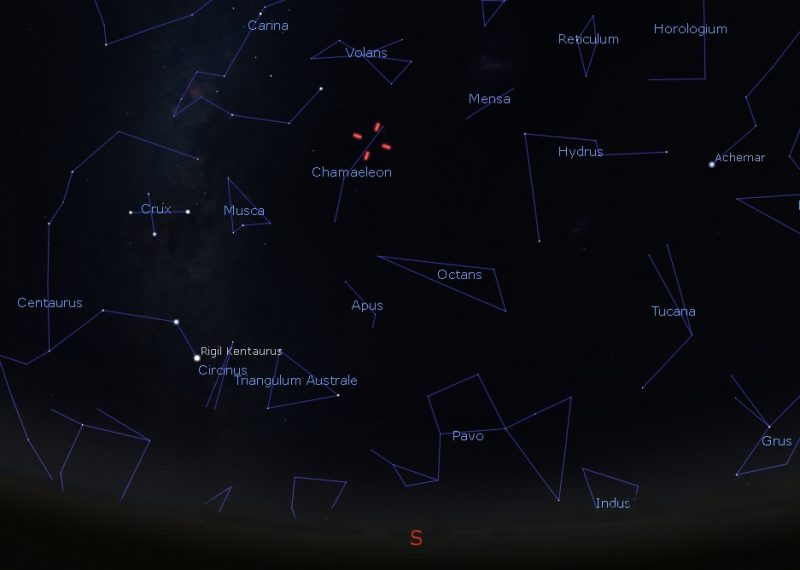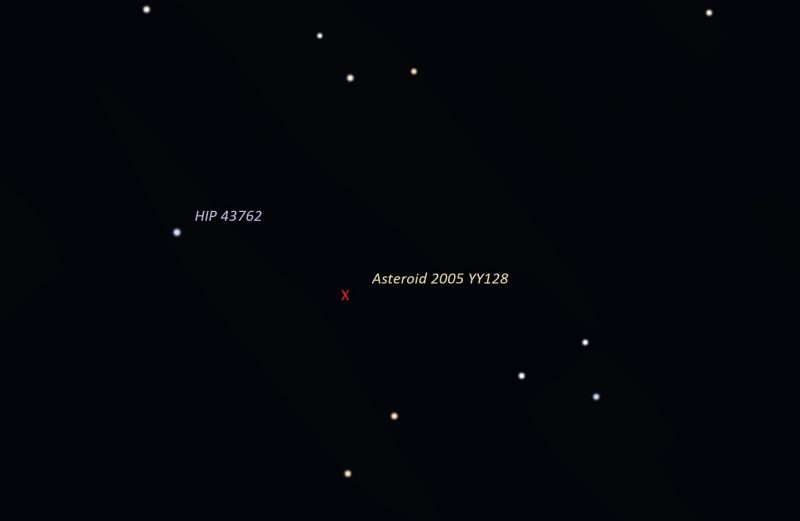
Asteroid will pass Earth safely this week
Yet another asteroid in the news! This one is a little less splashy than the recent disintegration of the one-meter-wide asteroid over France. But it’s this asteroid’s closest approach to Earth in more than 400 years. And the asteroid is medium-sized, about half a mile (about 1 km) wide. This asteroid – which is called 199145, or 2005 YY128 – is set to safely pass by our planet on the night of Wednesday, February 15, 2023.
And observers with telescopes can watch it. In fact, on recent nights, amateur astronomers using telescopes have already been able to spot this space rock. And astronomers using the Goldstone Antenna in California tried to obtain radar images of asteroid 2005 YY128 from February 11 to 13, 2023. If they succeeded, and we run across any of those images, we’ll add them to this post.
About the name 2005 YY128. The 2005 indicates the year of discovery. Astronomers at Kitt Peak Observatory in Tucson, Arizona, discovered asteroid 2005 YY128 on December 30, 2005. And so the orbit of this asteroid has been tracked for years, and is well known.
That’s why we know there’s nothing to fear from this asteroid. Based on studies of its movement through space, astronomers have determined it will safely pass by our planet’s south pole at about 12 times the moon’s distance.
Its closest approach to Earth will happen on February 15, 2023, around 7:46 p.m. EST.
Asteroid 2005 YY128 from the Southern Hemisphere
This asteroid is passing to the south of Earth. And observers in the southern U.S. had a shot at spotting the space rock using small telescopes on the night of February 13.
Meanwhile, those in the Southern Hemisphere will be favored with possible views during the asteroid’s closest approach.

The path of the asteroid
The Apollo-type asteroid is traveling through space at a speed of 55,140 miles per hour (88,740 km/h or 24.65 km/sec), relative to Earth. The space rock’s high speed allows amateur astronomers to detect its motion in front of the stars. But the distance makes it appear as a slow-moving object.
This video shows asteroid 2005 YY128, which appears as a small moving star. Raymond Negron captured the asteroid with a 92-mm telescope from Cabo Rojo, Puerto Rico:
What is a Potentially Hazardous Asteroid?
Astronomers categorize asteroids as potentially hazardous if their orbits and brightnesses (an asteroid’s brightness suggests its size) meets certain parameters. So potentially hazardous doesn’t mean an asteroid is a true hazard to Earth at this time.
Instead, Potentially Hazardous Asteroids (PHAs) include all asteroids whose orbits carry them, at times, within of 0.05 AU (0.05 Earth-sun distances) or less of Earth. That’s 4,600,000 miles (7,402,982 km, or about 18 times the moon’s distance). They also must have at least this brightness – an absolute magnitude of 22 or brighter – to be considered PHAs.
With a diameter between 1,903 feet (580 meters) to 4,265 feet (1.3 km), the space rock 2005 YY128 earned the classification of a Potentially Hazardous Asteroid.
What does that mean for us? Mainly that its medium size and relative closeness makes it bright enough for observers with an 8-inch or larger telescope to spot it. And sky enthusiasts with camera-equipped scopes have been able to capture the asteroid even in smaller telescopes.
Bottom line: A half a mile wide (1 km wide) asteroid will pass Earth safely on February 15 and 16, 2023. Observers with telescopes can spot it. See star charts here.











